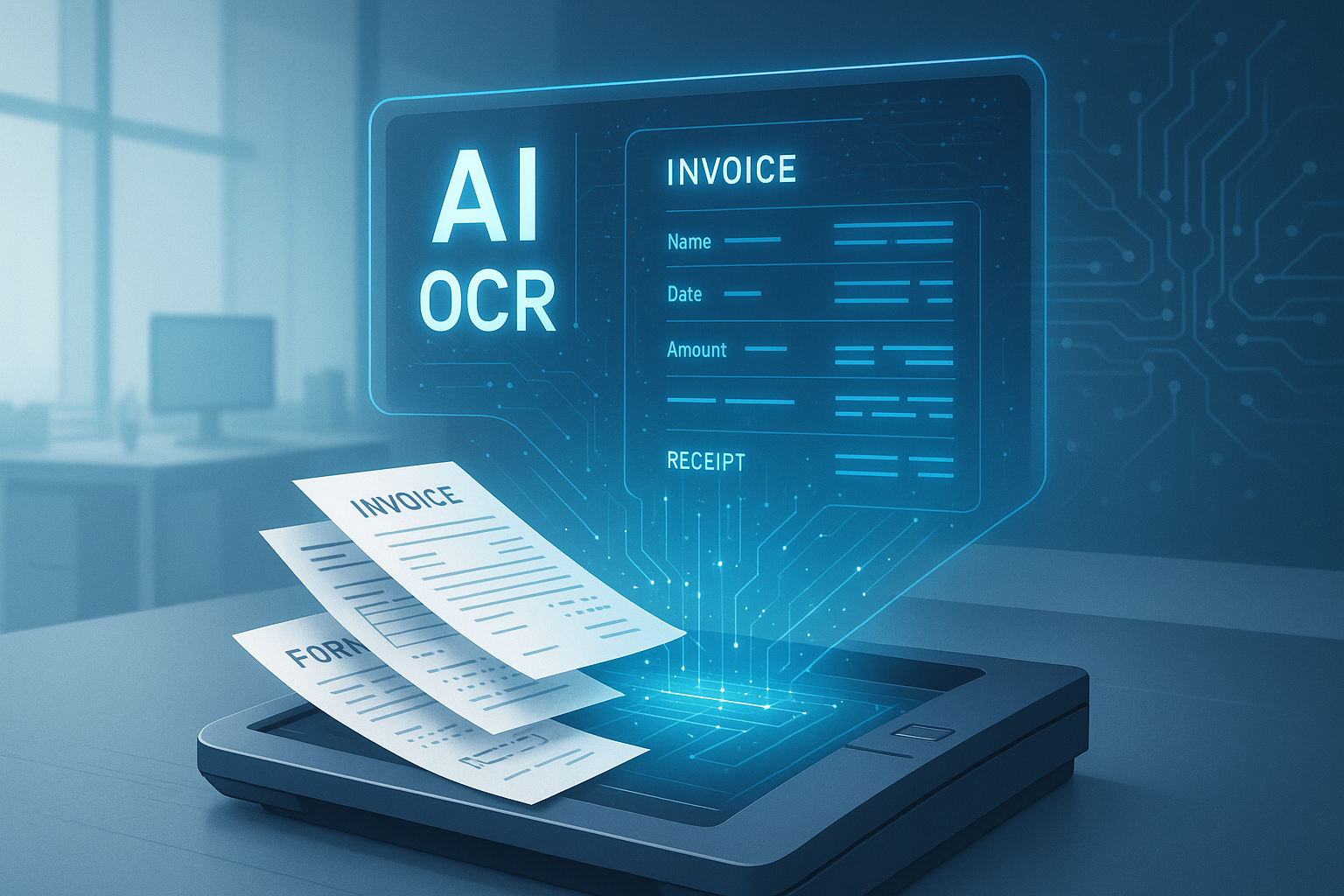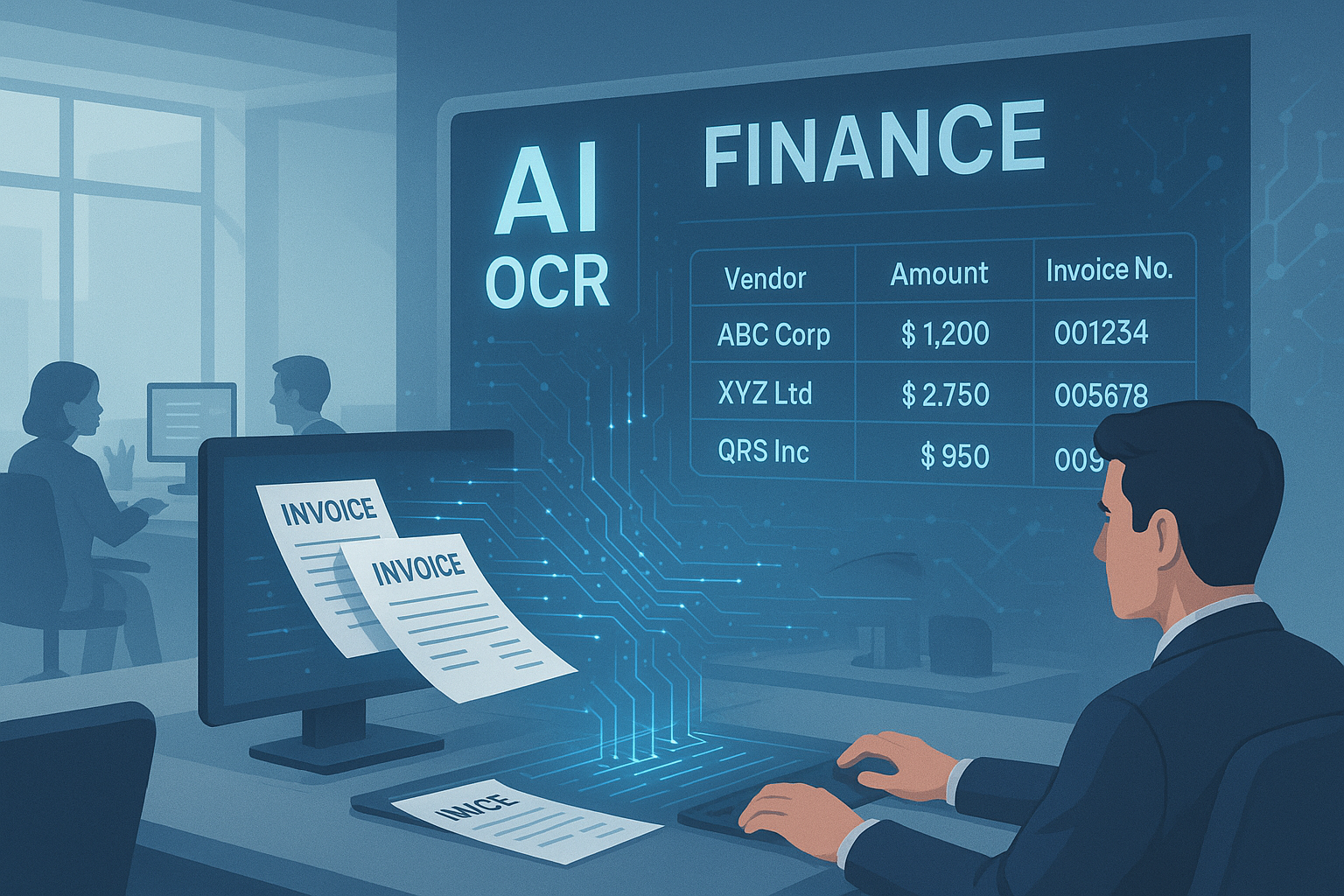Transforming Financial Services: The Complete Guide to Document Automation
Discover how document automation for financial services is revolutionizing workflows, reducing costs, and minimizing errors while helping institutions meet compliance requirements.

Table of contents
Introduction to Document Automation in Financial Services
Financial institutions process thousands of documents daily—from loan applications and account statements to invoices and compliance forms. This paper-intensive environment creates significant operational challenges, with staff spending countless hours on manual data entry, document verification, and filing. Document automation for financial services has emerged as a transformative solution to these challenges, offering a path to greater efficiency, accuracy, and cost savings.
The financial services sector stands to gain tremendously from automation technologies that can intelligently capture, process, and manage critical information from various document types. With regulatory requirements becoming increasingly stringent and customer expectations for faster service growing, the adoption of document automation is no longer optional—it's a competitive necessity.
Understanding Document Automation Technology
Document automation encompasses a range of technologies designed to streamline the handling of physical and digital documents. At its core, this technology aims to reduce manual intervention while improving data accuracy and processing speed.
The Role of OCR in Financial Document Processing
Optical Character Recognition (OCR) forms the backbone of modern document automation systems. OCR in finance transforms printed or handwritten text into machine-readable data, enabling financial institutions to automatically extract information from various document types.
Advanced OCR document processing software can now recognize complex financial documents such as invoices, contracts, and statements with remarkable accuracy. These systems can identify structured fields like account numbers, dates, and amounts, as well as interpret unstructured text in notes or descriptions.
Beyond Basic OCR: Intelligent Document Processing
Today's financial document processing systems go beyond simple text recognition. They incorporate artificial intelligence and machine learning to understand document context, identify relevant information, and validate data against established rules or databases.
Invoice OCR, for example, can automatically extract vendor information, line items, tax amounts, and payment terms, then route this information to accounting systems without manual intervention. This level of automation dramatically reduces processing time and virtually eliminates data entry errors.
Key Benefits of Document Automation for Financial Institutions
Operational Efficiency and Cost Reduction
Financial institutions implementing document automation typically report 60-80% reductions in document processing times. This efficiency translates directly to cost savings—both in terms of labor hours and physical storage requirements. Staff previously dedicated to manual data entry can be reassigned to higher-value activities that require human judgment and expertise.
Enhanced Accuracy and Compliance
Manual document processing inevitably leads to errors, with industry averages suggesting error rates between 1-4% for manual data entry. These errors can have serious consequences in financial services, from incorrect customer billing to compliance violations.
Document automation systems can reduce error rates to near-zero levels while creating comprehensive audit trails that support compliance with regulations like GDPR, KYC requirements, and anti-money laundering provisions. This combination of accuracy and traceability is invaluable in an increasingly regulated industry.
Improved Customer Experience
Perhaps the most compelling benefit for many financial institutions is the impact on customer experience. Workflow automation enables faster processing of applications, claims, and service requests. What once took days can now be completed in minutes or hours, allowing financial service providers to meet rising customer expectations for speed and convenience.
Implementation Strategies for Financial Document Automation
Assessing Your Document Ecosystem
Successful implementation begins with a thorough assessment of your current document processes. Financial institutions should catalog their document types, volumes, and existing workflows to identify the highest-value automation opportunities.
Priority should typically be given to high-volume, standardized documents that currently require significant manual processing. Invoice processing, loan applications, and account opening documents often represent excellent starting points for automation initiatives.
Choosing the Right Technology Solution
The market offers numerous OCR document processing software options, from standalone applications to comprehensive platforms that integrate with existing financial systems. When evaluating solutions, consider factors such as:
- Accuracy rates for your specific document types
- Integration capabilities with your core banking or financial systems
- Scalability to handle growing document volumes
- Security features and compliance certifications
- Availability of pre-built templates for common financial documents
Many institutions find that a phased approach works best, starting with a specific document type or department before expanding automation across the organization.
Real-World Applications of Document Automation in Finance
Streamlining Loan Processing
Loan processing represents one of the most document-intensive activities in financial services. Document automation can transform this process by automatically extracting data from application forms, financial statements, and supporting documentation. This acceleration can reduce loan processing times from weeks to days or even hours, creating a significant competitive advantage.
Automating Accounts Payable and Receivable
Financial document processing shines in accounts payable workflows, where invoice OCR can automatically capture vendor information, line items, and payment terms. Similar efficiencies can be gained in accounts receivable, with automation systems capturing payment information and updating customer accounts without manual intervention.
Enhancing Compliance and Reporting
Regulatory compliance demands extensive documentation and reporting. Document automation systems can automatically identify, extract, and organize compliance-related information, making it readily available for reporting and audits. This capability not only reduces the burden of compliance but also minimizes the risk of costly regulatory violations.
Overcoming Implementation Challenges
While the benefits of document automation are compelling, financial institutions often face challenges during implementation. Legacy systems, data security concerns, and staff resistance to change can all impede progress.
Successful institutions address these challenges through comprehensive change management programs, phased implementation approaches, and robust security protocols. Involving end-users in the selection and implementation process can also help ensure adoption and maximize the return on investment.
The Future of Financial Document Automation
The evolution of document automation continues at a rapid pace. Emerging technologies like blockchain for document verification, advanced analytics for predictive document processing, and natural language processing for complex document understanding are expanding the capabilities of automation systems.
Financial institutions that embrace these technologies now will be well-positioned to maintain competitive advantage and continue improving operational efficiency in the years ahead.
Conclusion
Document automation for financial services represents a transformative opportunity to reduce costs, improve accuracy, enhance compliance, and deliver superior customer experiences. By implementing OCR document processing and workflow automation technologies, financial institutions can redirect resources from manual paper handling to high-value activities that drive growth and customer satisfaction.
The question for most financial service providers is no longer whether to implement document automation, but how quickly they can deploy these technologies to remain competitive in an increasingly digital industry. Those who move decisively to embrace automation will likely find themselves with a significant advantage in efficiency, cost structure, and customer service capabilities.
Related Blog Posts

Revolutionizing Document Management with OCR Technology
Explore how AI-powered OCR technology transforms document management by digitizing text, streamlining workflows, reducing errors, and boosting efficiency across industries.

Smarter Invoice Processing: The OCR Advantage for Finance Departments
Learn how OCR technology revolutionizes invoice processing for finance departments by automating data extraction from invoices, reducing costs, and boosting accuracy. This guide covers OCR's benefits, AI enhancements, and practical steps to transform accounts payable operations

OCR APIs: The Secret Weapon Smart Finance Teams Are Using Right Now
Discover how OCR APIs transform finance teams by automating data entry from receipts and invoices, cutting processing time by up to 85%, and boosting accuracy to 98%. This guide shares real-world insights for modernizing financial workflows.
Ready to Transform Your Lending Process?
See how DocsAPI's AI-powered industry classification can help you process loans faster, improve accuracy, and scale your operations.
